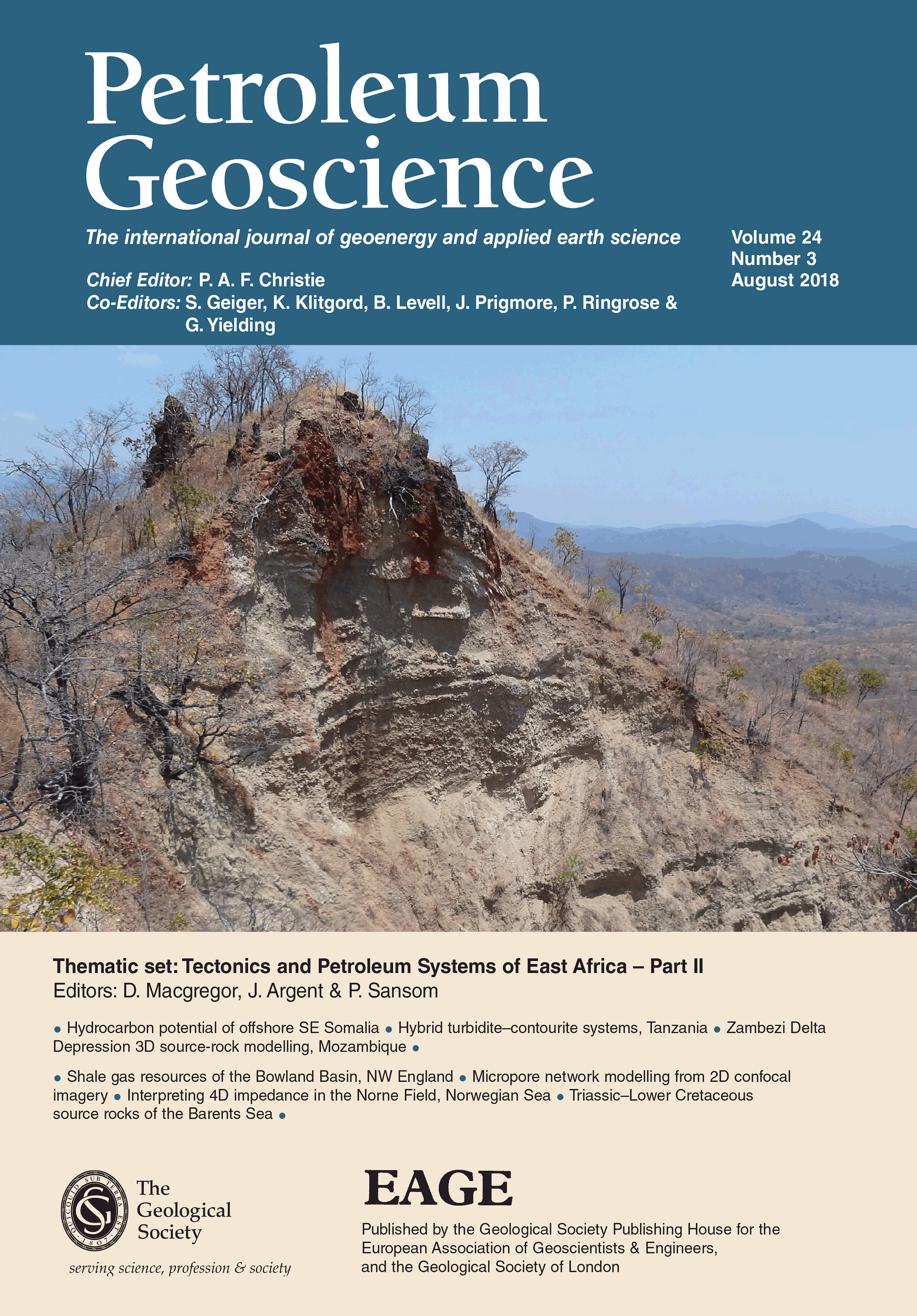
Full text loading...
New data from three shale gas exploration wells in the Bowland Basin of NW England contribute to the understanding of the stratigraphy, tectonic history and unconventional hydrocarbon resource potential of Lower Carboniferous strata. Three main prospective shales dominate the identified unconventional reservoirs: the Upper Bowland and Lower Bowland shales and the Hodder Mudstone, which are recognized by their distinctive lithology, corresponding log signatures and key zonal ammonoids. With a combined thickness of over 5000 ft (c. 1500 m), this sequence of shales is one of thickest known potential self-sourced, unconventional hydrocarbon resources. The strata are organic rich with total organic carbon (TOC) values of between 1 and 7%, with an average of 2.65%, and organic maturity that ranges from the upper oil window (pyrolysis T max c. 450°C) in the higher part of the section to dry gas (Ro = 2.4%; pyrolysis T max >470°C) in the Lower Bowland Shale. The sequence is strongly heterolithic, and up to 60% free gas is stored in thinly bedded carbonate and clastic silty turbidites. Adsorbed gas is concentrated in more organic-rich, hemipelagic shales which are distributed throughout the sequence. Near maximum burial temperatures of c. 130°C are inferred from vitrinite reflectance (Ro) and are consistent with fluid-inclusion microthermometry of carbonate-filled fractures. This indicates oil generation in the Late Carboniferous, prior to Variscan uplift. Renewed subsidence through the early Mesozoic resulted in increased maturity and gas generation. In the Bowland Shale the gas per unit volume of rock ranges from about 0.6 to 1.5 Bcf (billion cubic ft) per metre per square mile. The thick interval of gas-charged strata provides the opportunity to exploit these major hydrocarbon resources by using stacked multilateral wells from a common, strategically located and environmentally optimized surface pad.

Article metrics loading...

Full text loading...
References


Data & Media loading...

